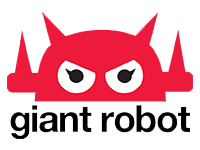Interview: David Gelb Director of Jiro Dreams of Sushi
Most of us have eaten sushi in one form or another. I’d like to think that I’m fairly adept, my mother owning a sushi restaurant for decades in Santa Monica. I’ve seen the rise of the American sushi movement from the early 80s. Sushi is now available everywhere, from your local supermarkets to the secret sushi locations that feature high end everything at unpublished, market rate prices. People talk about them, as if they’re holding onto a secret. Yet one place stands alone at the top of the rugged mountain of sushi establishments, and it’s Sukiyabashi Jiro – a restaurant that’s garnered back to back Michelin three star ratings in 2008 and 2009. It’s the food lovers holy grail. Filmmaker David Gelb captured the head master chef and octogenarian, Jiro at his finest moments in Jiro Dreams of Sushi. The documentary isn’t overly cinematic, or overly dramatic, it’s actually shot clean and classic, and at the same time, takes you into the world of the business of sushi – from in the shop, the fish market, to Jiro’s personal life which further explains how he is known to be the best.

GR: Can you back track and talk about sushi and how you felt compelled to make this documentary?
DG: I’ve loved sushi ever since my dad took me to Japan on business trips starting when I was 2 years old. I was fed a diet of cold soba and cucumber rolls. I’ve loved sushi and Japanese culture ever since. After I got out of film school, I thought to myself, ‘why not make it my job to travel to Japan and eat the best sushi in the world?’
GR: Jiro seems like a stoic and strict person. How is he off camera?
DG: Nobody takes his work more seriously than Jiro. He’s been making sushi for over half a century and he still considers everyday an opportunity to improve his skills. He’s strict because he’s applying his full concentration to the present task. However, once the last customer leaves and he has a moment to relax, you’ll find that he is incredibly kind and personable. He has a great sense of humor.
[youtube]Hi1jxRanimU[/youtube]
GR: Did it take long to gain his trust, since you’re intervening in people’s long awaited eating experience?
DG: It was a top priority to interfere as little as possible. Because of limited space in the restaurant, we shot with a crew of only two: myself and the translator. We rarely shot when customers were in the restaurant. On some occasions we would ask customers in advance if they wouldn’t mind being filmed. As long as we were polite and respectful Jiro was very patient with us.

GR: The technique of the filming was quite nice, and fit the entire Jiro concept. Was that a conscious decision?
DG: When you are shooting a living legend at work, I think that it is important to elevate the craft of the film itself to as close to his level as possible. The film includes some of the greatest recordings by masters such as Mozart, Bach, Tchaikovsky and Philip Glass. We shot on the Red One, which is arguably the best digital cinema camera ever. We wanted the film to feel as elegant as the sushi itself; as if Jiro himself were making the movie.
GR: Can you talk about what they thought of the film?
DG: They like it. Jiro is not particularly effusive with the compliments, but his son Yoshikazu came to the premiere in Berlin, which I interpret as the seal of approval.
GR: Were there any parts that had to be cut they were priceless?
DG: There were many great moments and scenes that we couldn’t include in the film. In our hundred hours of footage we’ve recorded a veritable video encyclopedia of high end sushi knowledge and technique. The blu-ray will have hours of extras for sushi die-hards.

GR: People always say that documentaries are a losing business. In this case according to what producer Kevin Iwashina said, it sounds like this film actually can or will make money. What’s your take on that and is that a surprise?
DG: Film in always a high risk investment. You are putting a lot of money into this thing that can only return the investment if audiences of strangers respond to it. In this case, our risk is mitigated slightly by the fact that sushi is incredibly popular, and we have intimate access to the greatest sushi chef of all time. We worked hard to make sure the movie is entertaining. I’m ecstatic with the way audiences are responding, and am surprised and humbled by the ambitious plans our distributor Magnolia Pictures has for the theatrical release.
GR: Would you classify yourself as an “expert” sushi eater? I would think making a film like this might carry some stigmas about your expertise on sushi.
DG: I once observed an interview with Jiro and a writer for a German magazine. The writer asked “when is the best time to eat sushi?” Jiro paused in thought, then dryly responded. “When you are hungry.” There are no secrets to eating sushi properly, all you have to do is eat with humility. If you are going to a reputable sushi bar, just sit down and eat what the chef gives you; whether you use chopsticks or your fingers doesn’t matter. Don’t try to impose your own preferences or agenda on the chef’s style. You have to trust him.
GR: After trying, meeting, filming, and eating Jiro’s sushi, can you talk about how your views on sushi has changed?
DG: The biggest change is in my perception of the rice. Until I ate Jiro’s rice I didn’t know how good rice could taste. The texture, temperature and seasoning is in perfect concert with the fish. The fish and rice are of equal importance. Its taken decades to perfect this balance, and you can taste it with every bite. This balance is what is referred to as “umami.” The rice elevates the flavor of the fish so you can taste its purest essence. The depth of flavor is immense, and I recommend to anybody that loves sushi to fly to Japan and eat at Sukiyabashi Jiro, or at the restaurants of his apprentices Mizutani and Harutaka to experience it for themselves. Consider it a pilgrimage.
GR: There are places in the US with similar price ranges for sushi, but how do they compare?
DG: There is only one Sukiyabashi Jiro, and the sushi of that restaurant and the restaurants of Jiro’s former apprentices are peerless in the West. However, there are a number of excellent sushi restaurants who’s chefs share Jiro’s passion for perfection. My personal favorites: In NYC, I love Sushi Yasuda, Sushi Ann, and 15 East. In LA, my favorites are Sushi Nozawa, Hirozen Gourmet, Sushi Zo, Saito Sushi and Sushi Karen.
Sukiyabashi Jiro
Address: 2-15, Ginza 4-chome, Chuo-ku, Tokyo (Tsukamoto Bld. B1F)
Phone: 03-3535-3600



